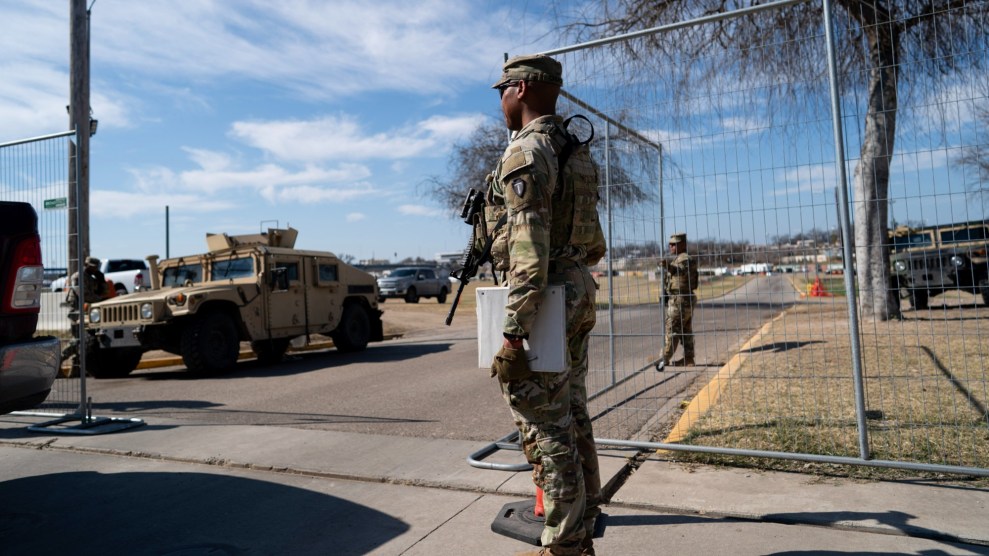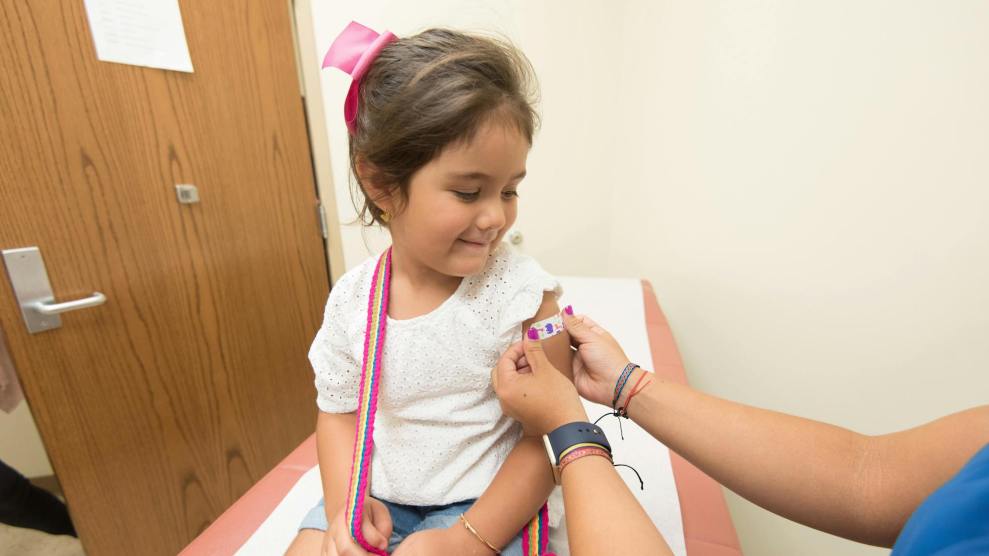Karen knows that it was her own mistakes that got her into trouble: “I messed up,” she admits. She was arrested in 1999 for intent to manufacture methamphetamine, a charge that kept her in jail for three months. Her son, then three months old, was placed in foster care. To get him back she would have to abide by a “reunification plan” that required parenting classes and regular drug testing after her release.
For several months, Karen (who asked that her real name not be printed) progressed well, according to her lawyer. Then came her second big mistake: She relapsed. She was arrested for possession of methamphetamine, and sentenced to another two years in prison. This time there was no reunification plan. Child-protection workers initiated proceedings to terminate Karen’s parental rights and put her son up for adoption.
Many mothers lose custody of their children in America every year; what is unusual about Karen’s story is that she lost her son even though she had never been accused of abusing or neglecting her children. The reason is a little-known — and apparently unintended — wrinkle of a 1997 federal law, the Adoption and Safe Families Act.
Designed to move children from foster care into permanent homes, the law called for parental rights to be terminated if the parents didn’t retrieve the children after a certain period — typically between 15 and 22 months. What no one considered at the time of the act’s passage, advocates say, is that even a short jail term could cause a parent to miss that deadline and permanently lose his or her children. “The fear,” says Myrna Raeder, a professor at Los Angeles’ Southwestern University School of Law who studies child custody issues, “is that we’re creating a class of orphans who are the children of women offenders.”
Exactly how many families are affected by the adoption act is unclear: Most children of male prisoners live with their mothers, and most children of female prisoners stay with other relatives. As many as 10 percent of women prisoners, however, have kids in foster care — which is where the adoption deadlines come into play. And the number of those children is likely to continue growing: Over the past decade, the war on drugs and tougher sentencing laws have put ever more mothers behind bars. From 1989 to 1999, the number of female inmates in state and federal prison leapt from about 40,000 to almost 91,000. Approximately 70 percent of that total were mothers, and most of them were single parents. Based on those numbers, it’s estimated that several thousand women have had their parental rights terminated as a result of relatively minor offenses.
Even some of those charged with implementing the adoption deadlines have mixed feelings about the law. Debbie Williams, program manager of child welfare services in California’s Madera County, home of the state’s two largest women’s prisons, says guidelines for terminating parental rights during a child’s stay in foster care are sometimes too stringent. Unless an incarcerated mother has a long history of failed reunification attempts, she says, “I think we should have the option to offer her services and hopefully reunify her with her child.”
There’s a common attitude, says Denise Johnston, director of the Center for Children of Incarcerated Parents, a national advocacy group, that people convicted of drug or other offenses shouldn’t be allowed to be parents. “And I might even agree with that if we had good places to put children,” she says. But, Johnston notes, children’s chances of being adopted wane as they grow older. By age 7, the odds of finding an adoptive family are less than 50 percent, and the child is likely to grow up in group homes — just what the law was designed to avoid.
Karen, for her part, says she still hopes to be reunited with her other child, the three-month-old girl to whom she gave birth eight months after her second arrest last April. She expects to be released on parole this summer, is attending parenting classes, and has volunteered for drug treatment. But she has been told that child-protection workers may not give her another chance. Asked what she’ll do if they don’t recommend reunification with the girl, she catches her breath, and starts to cry. “I haven’t even thought about that,” she says.














